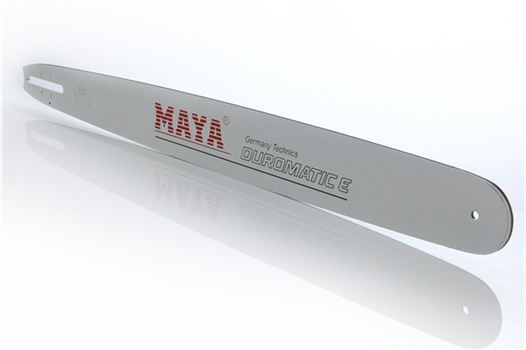Contact Us


News content

When it comes to tackling challenging outdoor tasks, a reliable chainsaw is a musthave tool. The chainsaw blade, a critical component of this powerful equipment, plays a crucial role in ensuring optimal performance. Over time, however, wear and tear can take a toll on the chainsaw blade, affecting its efficiency and safety. In this comprehensive guide, we'll explore the signs that indicate it's time to replace your chainsaw blade.
Before delving into the signs that suggest a replacement is due, let's take a moment to understand the importance of the chainsaw blade. The chainsaw blade is the workhorse of the chainsaw, responsible for the precision and effectiveness of cutting through wood. Regular maintenance is essential to keep this component in topnotch condition.
One of the most common signs that your chainsaw blade needs attention is dullness. A dull chainsaw blade compromises cutting efficiency, making your tasks more challenging than they need to be. Recognizing the symptoms of a dull chainsaw blade is crucial for maintaining productivity.
Identifying a dull chainsaw blade requires a keen eye. Look for uneven cuts, increased cutting time, and excessive sawdust. These indicators signal a loss of sharpness, emphasizing the need for a new chainsaw blade.
When a chainsaw blade starts to struggle through cutting tasks, it's a clear indication that replacement is imminent. Reduced cutting performance not only hinders your efficiency but also poses safety risks. Understanding the reasons behind this decline can help you address the issue promptly.
Several factors contribute to a chainsaw blade's struggle. From inadequate tension to improper sharpening techniques, identifying the root cause is essential for effective resolution. Regular checks and adjustments can prevent this decline in performance.
An often overlooked sign that your chainsaw blade needs replacement is unusual vibrations during operation. Excessive vibrations can lead to discomfort, fatigue, and even potential damage to the chainsaw itself. Understanding the sources of these vibrations is key to ensuring a smooth cutting experience.
Identifying and addressing unusual vibrations involve inspecting various components, including the chainsaw blade, chain tension, and guide bar. Proper lubrication and regular maintenance can significantly reduce vibrations, prolonging the life of your chainsaw blade.
Visual inspection is a powerful tool for assessing the condition of your chainsaw blade. Wear and tear on the blade can manifest in various ways, providing valuable insights into its overall health. Learning to recognize these visual clues can help you determine the appropriate time for a replacement.
Check for missing or damaged cutting teeth.
Inspect the guide bar for signs of warping or bending.
Examine the chainsaw blade for any visible cracks or deformities.
Look for uneven wear along the cutting edge.
Precision is paramount when it comes to using a chainsaw. If you notice inconsistencies in your cuts, it's a clear sign that your chainsaw blade may be reaching the end of its lifespan. Understanding the factors contributing to uneven cuts can guide you in making informed decisions about replacement.
Uneven cuts can result from factors such as a misaligned guide bar, improper chain tension, or a wornout chainsaw blade. Regular maintenance routines that address these issues can enhance the precision of your cuts and extend the life of your chainsaw blade.
In conclusion, the chainsaw blade is a critical component that demands attention and care. Recognizing the signs that indicate it's time to replace your chainsaw blade is essential for maintaining efficiency, safety, and overall performance. By incorporating regular maintenance practices and staying attuned to the subtle signals, you can ensure that your chainsaw is always ready for the toughest outdoor tasks.
Remember, a wellmaintained chainsaw blade not only makes your work more manageable but also contributes to the longevity of your chainsaw, providing you with reliable cutting power whenever you need it.
More
This is very pleasing indeed. But get a little laissez faire with the maintenance regime and it won’t be long before the same machine is practically burning its way through.Not only does this make the job take far longer, it uses more fuel, causes premature bar and sprocket wear and can risk overheating the engine.
Although there are many different brands and models of chainsaws, their structures are similar, and they are all in line with ergonomic design principles.
More
Email: qirui@qiruibar.com
Tel:0086-571-82308666
Add: No. 390, Xiangdafang Industrial Park, Wenyan Street, Xiaoshan District,Hangzhou,Zhejiang,China
Website: www.qiruibar.com



Contact Us
Contact Us
